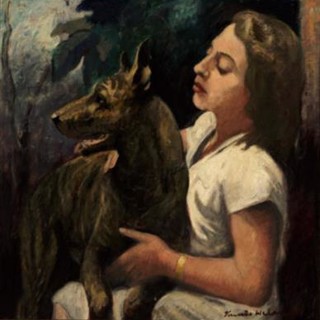
Colette Pope Heldner (maiden name Dorothy Colette Pope) was born in Waupaca, Wisconsin on May 18, 1902, and raised in Duluth, Minnesota. Heldner studied at the Rachel McFadden Art Studio in Duluth and married her instructor, the noted artist Knute Heldner. Her husband’s impressionist style and their trip to Europe was very influential on the change to Colette’s style. They moved to New Orleans and returned to Duluth for the summer, painting both Louisiana and Minnesota throughout their careers.
Colette was known for her French Quarter scenes as well as her Swamp Idyl paintings which proved to be financially successful for her. Colette innovated traditional French Quarter scenes through the replacing a brown tonality with bright colors and distortions on realistic form. The Heldner’s were less concerned with precision of elements, instead repeating stock elements such as cypress trees, shacks with porches, docks, moss, and fishermen. Many of her works include a dark, atmospheric quality. For decades Colette Heldner produced paintings for residents and tourists, which brought her much recognition. After her husband’s death in 1952, her paintings became more expressive with looser brushstrokes and bolder colors. She worked to meet the demand for her “swamp Idylls” paintings. Towards the end of her life, Heldner acquired many imitators in New Orleans.
Colette Pope Heldner received critical acclaim for a recent retrospective called “In a New Light; America’s Brush with Impressionism,” which was exhibited at the Morris Museum of Art. Her work was included in the exhibit along with some American masters such as William Merritt Chase and Ernest Lawson. Her paintings can be found in several private and public collections including the LSU Museum of Art and the Ogden Museum of Southern Art.
